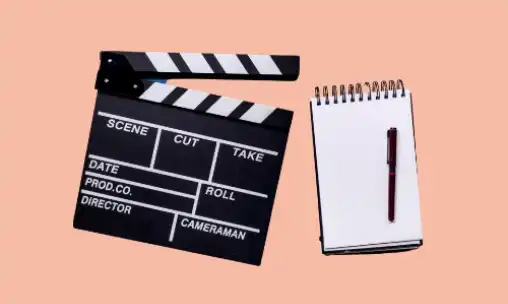
Learn the basics of
Screenwriting
A comprehensive guide to the art and craft of screenwriting. Within this course, you will be guided through all the essential aspects of writing your first feature film – starting from the basic techniques you’ve got to learn, progressing through the history of this artform, and ending in your achievement of the title of truly holistic screenwriter.
6,630
Graduates
All levels
Certified

Course details
MODULE 1
Diploma in Screenwriting
MODULE 1
Diploma in Screenwriting
1.The Key Elements of Story
In this lesson we will learn just what the elements are that make up a well-rounded screenplay - elements which, in turn, make a good film.
2.Research
A look at the essential concepts to consider before researching your work, a crucial look at the types of sources writers will interact with, and an exploration of how to integrate research into your film – considering the concepts of research storage, balance, and poetic license.
3.The Three-Act Structure
A crucial examination of film's most popular narrative structure, getting into the specifics of how the three acts function, how to plot narrative within this framework, and a demystifying discussion of the importance of narrative causality.
4.The Kishotenketsu Structure
An important exploration of a structuring alternative to the Three-Act structure, increasing the potential for originality and innovation.
5.Character Development
A look at the core concepts to consider when constructing characters – with particular focus on the public/private disparity as well as the need for character motivation. We also look at more key character archetypes and learn handy writing tips for writing characters for a modern audience.
6.Character, Conflict, & Humanity
A deeper look at character development, with particular focus on the crucual nature of conflict as well as the subcategories thereof. We then look at how to draw up a character bio and, also, how to design a cohesive cast.
7.Dialogue for Film
An important look at what distinguishes dialogue from real-life speech, a deep dive into how levels of human intimacy guides dialogue, as well as a more technical look at how to make decisions regarding the use of slang/regionalisms/jargon in fiction.
8.Film analysis
Within this lesson we will use a case study film to examine just how the Three-Act structure works in action - examining just how its plot points and guidelines can be seemlessly integrated into a film.
MODULE 2
Intermediate in Screenwriting
MODULE 2
Intermediate in Screenwriting
1.Genres of Film
We look at the original Ancient Greek genres, how they grew and now present in the modern age, and also take an important look at the most up-to-date approaches to the concept, as found within the realm of film media.
2.Genre Insight: Comedy & Drama
This lesson will cover the storied history of this genre as well as unpack its role with modern cinema - both in terms of its critical necessity and cultural appeal.
3.Genre insight: Romance
Within this lesson, we will seek to unpack just why the romantic film has found such a home within the modern world - with particular focus on 'love culture' and the ethical responsibility of representation within this genre.
4.Genre insight: Horror & Sci-Fi
We unpack the true and often-ignored heft of these genres, examine why they're so often overlooked and relegated, as well as learn how to write within these genres.
5.Digging for Ideas
We undertake the process of learning just what ideas are, where they come from, and how to both unearth and choose ideas for development.
6.Story Development
Using both case studies and theory, we explore just how an idea is developed from its most nascent stages into a story hefty enough to deserve a feature film.
7.Exposition & Backstory
A deep-dive into the core differences between these often-confused concepts, as well as learning how to apply them within the Three-Act- and Hero's Journey story structures.
8.On Foreshadowing: Set-ups & Pay-offs
We define and explore the concept of foreshadowing, split it into its component parts, and look to some examples from film to make the case of its impirtance.
